
– By BHUMIKA
– Intern IPPCS’21
– Political Science student at IPCW,DU
In 2014, the newly elected Swedish Social Democratic-Green Party Government widely and proudly revealed that it would in the future pursue a Feminist Foreign Policy (FFP), with the out- spoken objective to become the ‘strongest voice for gender equality and full employment of human rights for all women and girls’ (Ministry of Foreign Affairs, 2015). Sweden’s feminist foreign policy platform additionally signals a strong support for United Nations Security Council Resolution (UNSCR) 1325, adopted in 2000, and related resolutions on Women, Peace and Security (WPS). Furthermore, the advancement of a distinctively feminist foreign policy was steadily connected to Sweden’s Foreign Minister Margot Wallström, a top negotiator with past experience as the UN unique delegate on sexual violence in conflict. On various events, Wallström has accentuated both the connection between ladies’ cooperation in worldwide legislative issues and economical harmony and the idea that ladies’ strengthening decidedly impacts on public and global security.
WHAT IS FEMINIST FOREIGN POLICY?
In reacting to the regularly posed questions of precisely what a feminist foreign policy involves, Wallström has alluded to a women’s activist tool kit, which comprises of three Rs: Representation, Rights, and Reallocation. Basically, it is a functioning technique and a point of view that accepts three Rs as its beginning stage and is based on a fourth R. The ramifications is that the Swedish Foreign Service, in the entirety of its parts, will endeavor to reinforce women’s and girls’ Rights, Representation and Resources, based on the Reality in which they live.
In 2016, the Swedish Ministry for Foreign Affairs introduced long haul aims for six focus areas, with substantial directions of what to do, just as how to do it, while pursuing its FFP (Ministry for Foreign Affairs, 2016). The six center regions are: (1) full enjoyment of human rights; (2) independence from physical, mental and sexual violence; (3) participation in forestalling and settling clashes, and post-conflict peacebuilding; (4) political support and impact in every aspect of society; (5) economic rights and empowerment; and (6) sexual and conceptive wellbeing and rights.
Sweden’s feminist foreign policy is a groundbreaking plan that expects to change structures and upgrade the perceivability of women and girls as main actors. Gender inequality and discrimination in the entirety of life’s stages and settings will be neutralized. The approach depends on multifacetedness, which means considering the way that individuals have distinctive day to day environments, levels of impact and needs.
INDIA’S NEED FOR A FEMINIST FOREIGN POLICY
While Sweden’s thorough and straight forward commitment to pursue a feminist foreign policy is exceptional, other states have also sought to advance pro-gender norms and the WPS-agenda, as part of their foreign policy conduct. For example, during her residency as the US Secretary of State, Hillary Clinton dispatched the ‘Hillary Doctrine‘ which outlined the oppression of ladies as a security danger to the United States and the world. Under the initiative of previous British Foreign Secretary William Hague, the United Kingdom promoted a normative shift towards the annihilation of sexual violence in conflict and Australia’s first female foreign minitser, Julie Bishop, while being in office, incessantly advocated the mainstreaming of gender in international institutions. As for India, the discourse is a work in progress, with a large number of scholars very aptly highlighting the moral and strategic advantage of such a notion for the country. More so with the recent release of annual Gender Gap Report 2021 by the World Economic Forum, as India has slipped 28 spots to rank 140 out of the 156 countries that were covered. The index is majorly based on four dimensions, where political participation maintains the largest gap globally, worse than the 2019 edition of the report. Within the 156 nations covered, women hold only 26% of parliamentary seats and 22% of ministerial positions. India in some ways reflects this widening gap, where the number of ministers declined from 23.1% in 2019 to 9.1% in 2021. The number of women in Parliament stands low at 14.4%.
Being a non-permanent member of the UNSC and as of late chosen to the UN Commission on the Status of Women for a four year term in September 2020, India needs to play a critical part. Gender considerations in India’s foreign policy aren’t a new concept. However found generally under the development assistance and peacekeeping, these have been inconceivably fruitful. From 2007 when India deployed the very first female unit to the UN Mission in Libya to support gender strengthening programs through SAARC, IBSA, IORA and other multilateral fora, our projects have been focused on making women the driving force for inclusive and sustainable growth. A significant number of our abroad projects in accomplice nations have a gender component, as found in Afghanistan, Lesotho and Cambodia. At home, 2015 saw gender budget exercise within the MEA towards development assistance.
What is required is a more formal planned methodology that goes past a simple improvement model to more extensive access, portrayal and dynamic. The WEF report and other comparative lists is a call to improve on the domestic front; regardless of how “feminist” our foreign and security policy may be, without balance at home it will not endure.
GOING AHEAD WITH FPP
FFP offers India a stage to extend its responsibilities and make its commitment felt as a materializing power, one that moves toward the subject of safety according to a comprehensive perspective. India’s previous endeavors signal that it is prepared to move towards FFP—it sent the principal all female police power unit to Liberia in 2007; effectively partook in UNSC debates on women, harmony, and security; and strongly supported women’s inclusion in peacemaking and peacekeeping.
India can move towards a FFP by first effectively appointing women to posts at different policy levels and including them straightforwardly in the direction of its foreign relations. Second, India can make a more grounded obligation to incorporate ladies at the decision-making tables, either through quota system or just by guaranteeing that there is an equivalent portrayal of the genders. Third, India can team up with different global, territorial, and national civil society associations to guarantee the legitimate execution of the FFP structure.
India’s verifiable record on women’s rights—or rather, women’s oppression—makes it improbable to quickly and viably take on a FFP system. Male centric qualities are so profoundly imbued inside Indian culture that India has scarcely figured out how to achieve an adjustment of the arrangement of disparity at home. Subsequently, it does not have the credibility to accept women’s activist qualities in its worldwide associations. A FFP approach may not just help India in cultivating inventive perspectives, yet in addition permit it to expand upon its customary perspective on security, work with assorted portrayal, and build long-term bilateral relations.
BIBLIOGRAPHY
- Malena Rosén Sundström & Ole Elgström (2020) Praise or critique? Sweden’s feminist foreign policy in the eyes of its fellow EU members, European Politics and Society, 21:4, 418-433.
- Aggestam, K., & Bergman-Rosamond, A. (2016). Swedish Feminist Foreign Policy in the Making: Ethics, Politics, and Gender. Ethics & International Affairs, 30(3), 323-334.
- Aggestam K, Bergman Rosamond A, Kronsell A. Theorising feminist foreign policy. International Relations. 2019;33(1):23-39.
- Khushi Singh Rathore, Opinion – A Feminist Foreign Policy for India: Where to Turn? International Relations. AUG 6 2021
- Akanksha Khuller, India Must Move Towards a Feminist Foreign Policy, South Asian Voices, March 8, 202.
- https://foreignpolicy.com/2019/01/30/sweden-feminist-foreignpolicy/
- https://www.thehindu.com/opinion/columns/margot-wallstrm-writes-about-a-new-landmark-in-indiasweden-relations/article7261338.ece

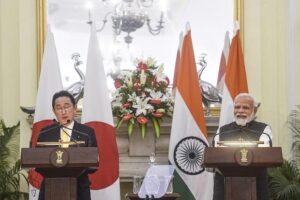

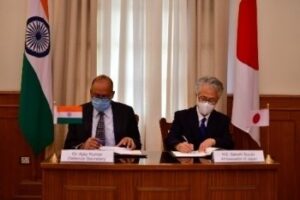

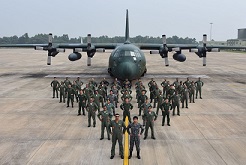



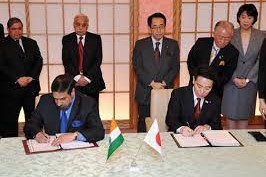

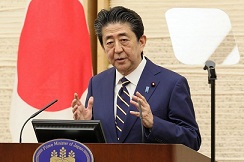
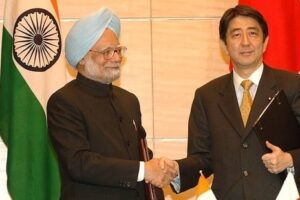

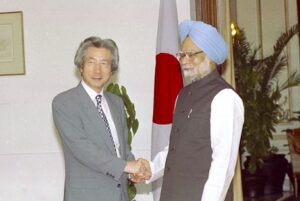
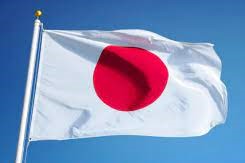
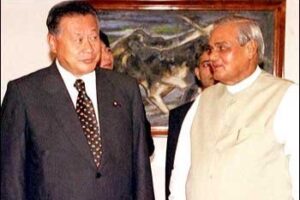





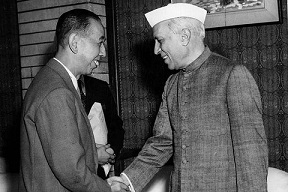



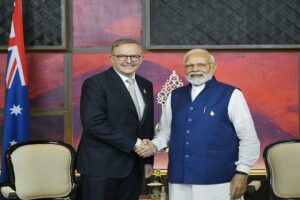



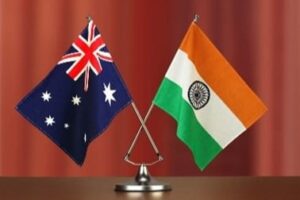
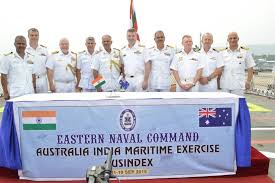

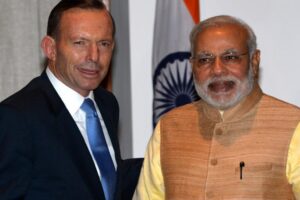





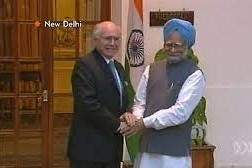
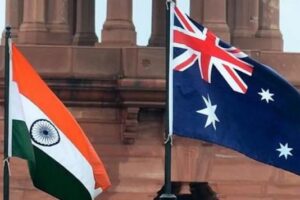
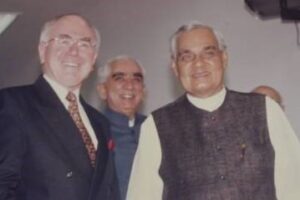

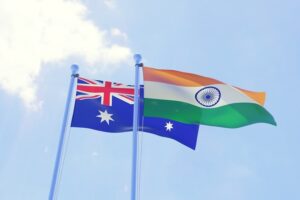

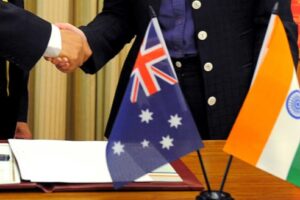

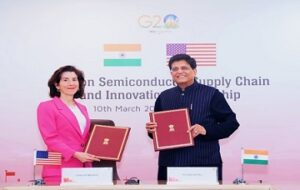
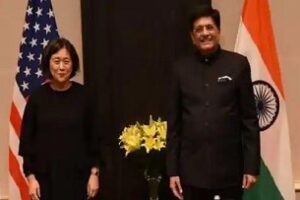
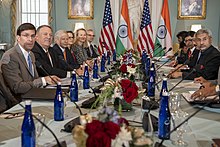

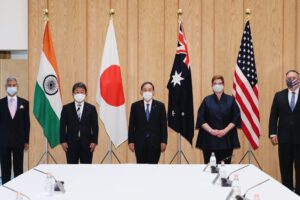

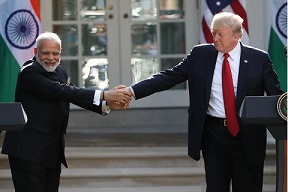
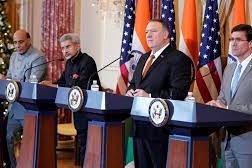

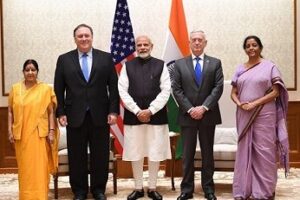
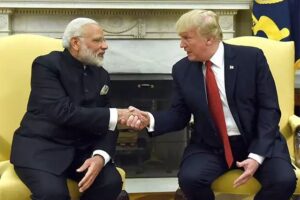
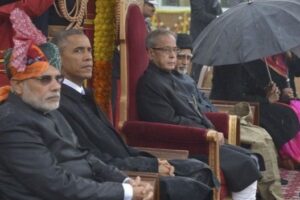

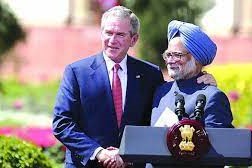
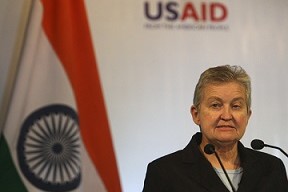
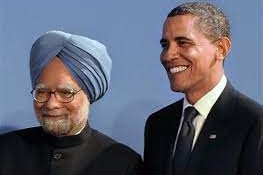
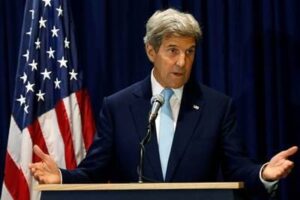

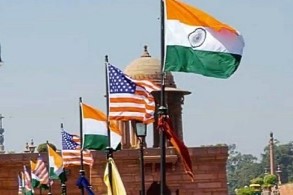
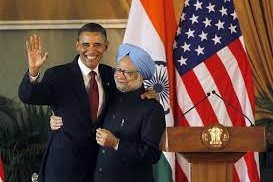
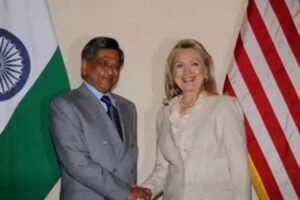
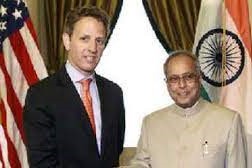
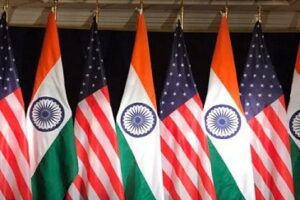
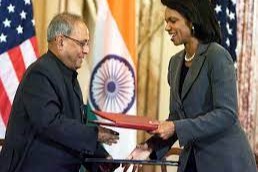

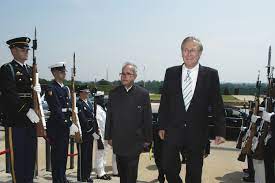




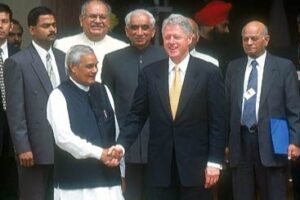
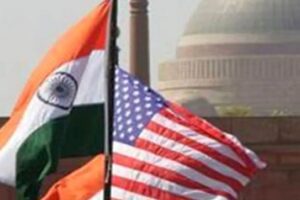

 onducted a total of five underground nuclear tests, breaking a 24-year self-imposed moratorium on nuclear testing. Pakistan followed, claiming 5 tests on May 28, 1998, and an additional test on May 30. The unannounced tests created a global storm of criticism, as well as a serious setback for decades of U.S. nuclear nonproliferation efforts in South Asia. On May 13, 1998, President Clinton imposed economic and military sanctions on India, mandated by Section 102 of the Arms Export Control Act (AECA), and applied the same sanctions to Pakistan on May 30. Some effects of the sanctions on India included: termination of $21 million in FY1998 economic development assistance; postponement of $1.7 billion in lending by the International Financial Institutions (IFI), as supported by the Group of Eight (G-8) leading industrial nations; prohibition on loans or credit from U.S. banks to the government of India; and termination of Foreign Military Sales under the Arms Export Control Act. Humanitarian assistance, food, or other agricultural commodities are excepted from sanctions under the law.
onducted a total of five underground nuclear tests, breaking a 24-year self-imposed moratorium on nuclear testing. Pakistan followed, claiming 5 tests on May 28, 1998, and an additional test on May 30. The unannounced tests created a global storm of criticism, as well as a serious setback for decades of U.S. nuclear nonproliferation efforts in South Asia. On May 13, 1998, President Clinton imposed economic and military sanctions on India, mandated by Section 102 of the Arms Export Control Act (AECA), and applied the same sanctions to Pakistan on May 30. Some effects of the sanctions on India included: termination of $21 million in FY1998 economic development assistance; postponement of $1.7 billion in lending by the International Financial Institutions (IFI), as supported by the Group of Eight (G-8) leading industrial nations; prohibition on loans or credit from U.S. banks to the government of India; and termination of Foreign Military Sales under the Arms Export Control Act. Humanitarian assistance, food, or other agricultural commodities are excepted from sanctions under the law. 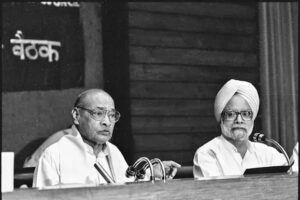
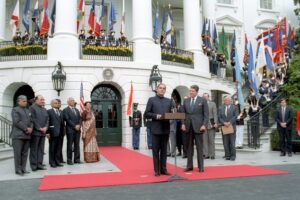
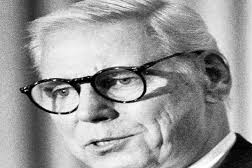
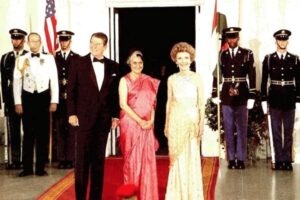
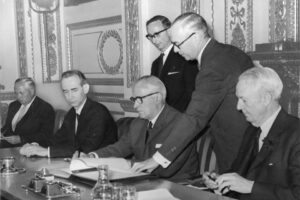
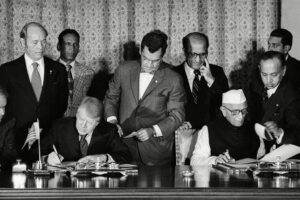
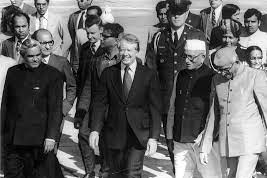

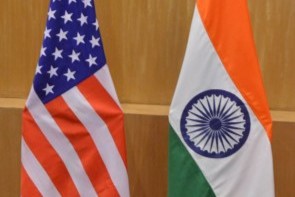

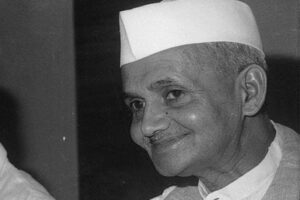

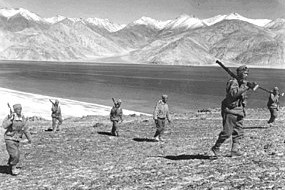
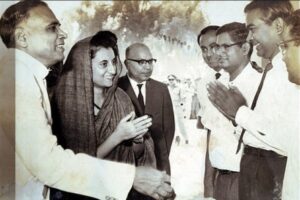
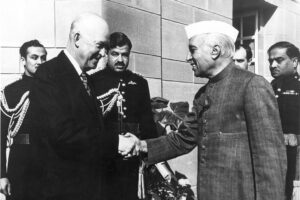

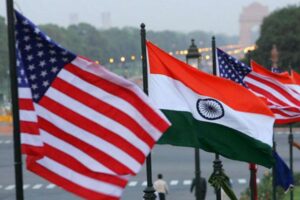
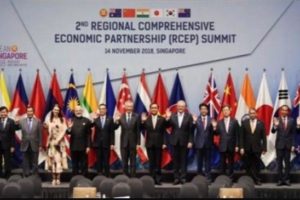 The first ministerial level meeting of QUAD was held on the sidelines of the United Nations General Assembly in New York. Before this, the QUAD had
The first ministerial level meeting of QUAD was held on the sidelines of the United Nations General Assembly in New York. Before this, the QUAD had AusIndEx is an exercise between India and Australia which was first held in 2015.The Australian
AusIndEx is an exercise between India and Australia which was first held in 2015.The Australian 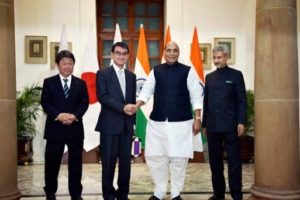



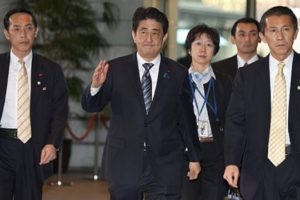



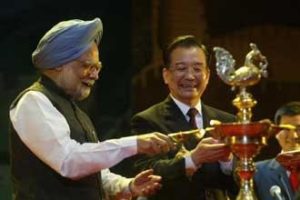 On recommendations of the Japanese government, the four countries met at Manila, Philippines for ASEAN Regional Forum (ARF) originally, but also ended up having a meeting of what we call the first meeting of four nation states on issues of
On recommendations of the Japanese government, the four countries met at Manila, Philippines for ASEAN Regional Forum (ARF) originally, but also ended up having a meeting of what we call the first meeting of four nation states on issues of 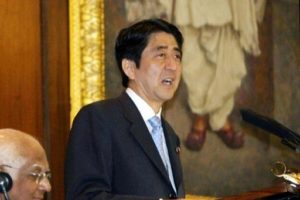 On his official visit to India, Japanese PM Mr. Shinzo Abe reinforced the ties of two nations, i.e., Japan and India with his famous speech about
On his official visit to India, Japanese PM Mr. Shinzo Abe reinforced the ties of two nations, i.e., Japan and India with his famous speech about  In 2007, Japanese President Shinzo Abe resigned from his post citing health reasons. This had a significant impact on QUAD as he was the architect & advocate of QUAD. His successor, Yasuo Fukuda, did not take up QUAD with such zeal leading to dormancy of the forum. (
In 2007, Japanese President Shinzo Abe resigned from his post citing health reasons. This had a significant impact on QUAD as he was the architect & advocate of QUAD. His successor, Yasuo Fukuda, did not take up QUAD with such zeal leading to dormancy of the forum. ( Japan earthquake and tsunami of 2011, also called Great Sendai Earthquake or Great Tōhoku Earthquake, was a 9.0 magnitude earthquake which struck below the floor of the Western Pacific at 2:49 PM. The powerful earthquake affected the northeastern coast of Honshu, Japan’s main island, and also initiated a series of large tsunami waves that devastated coastal areas of Japan, which also led to a major nuclear accident. Japan received aid from India, US, Australia as well as other countries. US Navy aircraft carrier was dispatched to the area and Australia sent search-and-rescue teams.
Japan earthquake and tsunami of 2011, also called Great Sendai Earthquake or Great Tōhoku Earthquake, was a 9.0 magnitude earthquake which struck below the floor of the Western Pacific at 2:49 PM. The powerful earthquake affected the northeastern coast of Honshu, Japan’s main island, and also initiated a series of large tsunami waves that devastated coastal areas of Japan, which also led to a major nuclear accident. Japan received aid from India, US, Australia as well as other countries. US Navy aircraft carrier was dispatched to the area and Australia sent search-and-rescue teams. 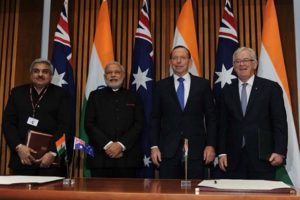 India and Australia signed the
India and Australia signed the  The India-Japan Agreement for Cooperation in the Peaceful Uses of Nuclear Energy was signed on 11 November, 2016 and came into force on 20 July, 2017 which was representative of strengthening ties between India and Japan. Diplomatic notes were exchanged between Dr. S. Jaishankar and H.E. Mr. Kenji Hiramatsu, Ambassador of Japan to India. (
The India-Japan Agreement for Cooperation in the Peaceful Uses of Nuclear Energy was signed on 11 November, 2016 and came into force on 20 July, 2017 which was representative of strengthening ties between India and Japan. Diplomatic notes were exchanged between Dr. S. Jaishankar and H.E. Mr. Kenji Hiramatsu, Ambassador of Japan to India. (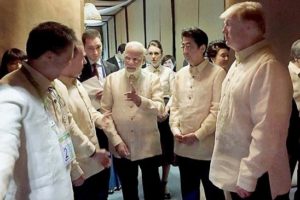 The foreign ministry
The foreign ministry The Officials of QUAD member countries met in Singapore on November 15, 2018 for consultation on regional & global issues of common interest. The main discussion revolved around connectivity, sustainable development, counter-terrorism, maritime and cyber security, with the view to promote peace, stability and prosperity in the
The Officials of QUAD member countries met in Singapore on November 15, 2018 for consultation on regional & global issues of common interest. The main discussion revolved around connectivity, sustainable development, counter-terrorism, maritime and cyber security, with the view to promote peace, stability and prosperity in the  The 23rd edition of trilateral Malabar maritime exercise between India, US and Japan took place on 26 September- 04 October, 2019 off the coast of Japan.
The 23rd edition of trilateral Malabar maritime exercise between India, US and Japan took place on 26 September- 04 October, 2019 off the coast of Japan.  After the first ministerial level meeting of QUAD in September, 2019, the senior officials of US, Japan, India and Australia again met for consultations in Bangkok on the margins of the East Asia Summit. Statements were issued separately by the four countries. Indian Ministry of External Affairs said “In statements issued separately by the four countries, MEA said, “proceeding from the strategic guidance of their Ministers, who met in New York City on the sidelines of the UN General Assembly recently, the officials exchanged views on ongoing and additional practical cooperation in the areas of connectivity and infrastructure development, and security matters, including counterterrorism, cyber and maritime security, with a view to promoting peace, security, stability, prosperity in the Indo-Pacific region.”
After the first ministerial level meeting of QUAD in September, 2019, the senior officials of US, Japan, India and Australia again met for consultations in Bangkok on the margins of the East Asia Summit. Statements were issued separately by the four countries. Indian Ministry of External Affairs said “In statements issued separately by the four countries, MEA said, “proceeding from the strategic guidance of their Ministers, who met in New York City on the sidelines of the UN General Assembly recently, the officials exchanged views on ongoing and additional practical cooperation in the areas of connectivity and infrastructure development, and security matters, including counterterrorism, cyber and maritime security, with a view to promoting peace, security, stability, prosperity in the Indo-Pacific region.” US 2+2 Ministerial Dialogue was held on 18 December, 2019, in Washington DC. Secretary of State Michael R. Pompeo and Secretary of Defense Mark T. Esper will host Indian Minister of External Affairs Dr. S. Jaishankar and Minister of Defense Shri Rajnath Singh. The discussion focussed on deepening bilateral strategic and defense cooperation, exchanging perspectives on global developments, and our shared leadership in the Indo-Pacific region.The two democracies signed the Industrial Security Annex before the 2+2 Dialogue. Assessments of the situation in Afghanistan, Pakistan, Nepal, Sri Lanka, and the Indian Ocean region in general were shared between both countries. (
US 2+2 Ministerial Dialogue was held on 18 December, 2019, in Washington DC. Secretary of State Michael R. Pompeo and Secretary of Defense Mark T. Esper will host Indian Minister of External Affairs Dr. S. Jaishankar and Minister of Defense Shri Rajnath Singh. The discussion focussed on deepening bilateral strategic and defense cooperation, exchanging perspectives on global developments, and our shared leadership in the Indo-Pacific region.The two democracies signed the Industrial Security Annex before the 2+2 Dialogue. Assessments of the situation in Afghanistan, Pakistan, Nepal, Sri Lanka, and the Indian Ocean region in general were shared between both countries. (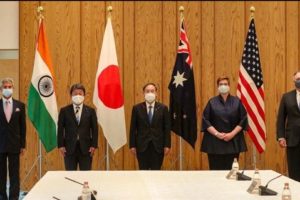 The foreign ministers of QUAD continued their discussions from the last ministerial level meeting in 2019, on 6 October, 2020. While there was no joint statement released, all countries issued individual readouts. As per the issue readout by India, the discussion called for a coordinated response to the challenges including financial problems emanating from the pandemic, best practices to combat Covid-19, increasing the resilience of supply chains, and enhancing access to affordable vaccines, medicines and medical equipment. There was also a focus on maintaining stability in the Indo-Pacific region amidst growing tensions. Australian media release mentions “We emphasised that, especially during a pandemic, it was vital that states work to ease tensions and avoid exacerbating long-standing disputes, work to counter disinformation, and refrain from malicious cyberspace activity. Ministers reiterated that states cannot assert maritime claims that are inconsistent with international law, particularly the United Nations Convention on the Law of the Sea (UNCLOS).”
The foreign ministers of QUAD continued their discussions from the last ministerial level meeting in 2019, on 6 October, 2020. While there was no joint statement released, all countries issued individual readouts. As per the issue readout by India, the discussion called for a coordinated response to the challenges including financial problems emanating from the pandemic, best practices to combat Covid-19, increasing the resilience of supply chains, and enhancing access to affordable vaccines, medicines and medical equipment. There was also a focus on maintaining stability in the Indo-Pacific region amidst growing tensions. Australian media release mentions “We emphasised that, especially during a pandemic, it was vital that states work to ease tensions and avoid exacerbating long-standing disputes, work to counter disinformation, and refrain from malicious cyberspace activity. Ministers reiterated that states cannot assert maritime claims that are inconsistent with international law, particularly the United Nations Convention on the Law of the Sea (UNCLOS).”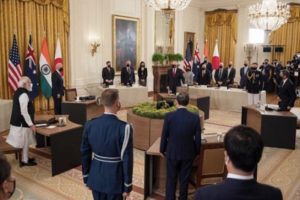 On September 24, President Biden hosted Prime Minister Scott Morrison of Australia, Prime Minister Narendra Modi of India, and Prime Minister Yoshihide Suga of Japan at the White House for the first-ever in-person Leaders’ Summit of the QUAD. The leaders released a Joint Statement which summarised their dialogue and future course of action. The regional security of the Indo-Pacific and strong confidence in the ASEAN remained on the focus along with response to the Pandemic.
On September 24, President Biden hosted Prime Minister Scott Morrison of Australia, Prime Minister Narendra Modi of India, and Prime Minister Yoshihide Suga of Japan at the White House for the first-ever in-person Leaders’ Summit of the QUAD. The leaders released a Joint Statement which summarised their dialogue and future course of action. The regional security of the Indo-Pacific and strong confidence in the ASEAN remained on the focus along with response to the Pandemic. 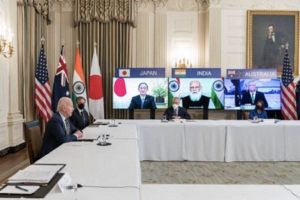 The QUAD Vaccine Partnership was announced at the first QUAD Summit on 12 March 2021 where QUAD countries agreed to deliver 1.2 billion vaccine doses globally. The aim was to expand and finance vaccine manufacturing and equipping the Indo-Pacific to build resilience against Covid-19. The launch of a senior-level QUAD Vaccine Experts Group, comprised of top scientists and officials from all QUAD member governments was also spearheaded.
The QUAD Vaccine Partnership was announced at the first QUAD Summit on 12 March 2021 where QUAD countries agreed to deliver 1.2 billion vaccine doses globally. The aim was to expand and finance vaccine manufacturing and equipping the Indo-Pacific to build resilience against Covid-19. The launch of a senior-level QUAD Vaccine Experts Group, comprised of top scientists and officials from all QUAD member governments was also spearheaded.  Although the Tsunami Core group had to be disbanded on fulfilment of its purpose, however the quadrilateral template that formed remained intact as a successful scaffolding of four countries, as stated by authors Patrick Gerard Buchan and Benjamin Rimland in their diplomatic brief about QUAD ( you can access the brief at
Although the Tsunami Core group had to be disbanded on fulfilment of its purpose, however the quadrilateral template that formed remained intact as a successful scaffolding of four countries, as stated by authors Patrick Gerard Buchan and Benjamin Rimland in their diplomatic brief about QUAD ( you can access the brief at 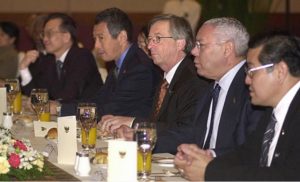 Secretary of State Colin Powell stated that the Core Tsunami Group was to be disbanded and folded and clubbed with the broader United Nations led Relief Operations. In a Tsunami Relief Conference in Jakarta, Secretary Powell stated that
Secretary of State Colin Powell stated that the Core Tsunami Group was to be disbanded and folded and clubbed with the broader United Nations led Relief Operations. In a Tsunami Relief Conference in Jakarta, Secretary Powell stated that 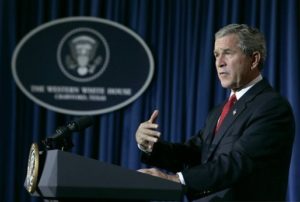 Soon after the Earthquake and Tsunami crisis, humanitarian reliefs by countries, viz., US, India, Japan, and Australia started to help the 13 havoc-stricken countries. The US initially promised $ 35 Millions in aid. However, on 29
Soon after the Earthquake and Tsunami crisis, humanitarian reliefs by countries, viz., US, India, Japan, and Australia started to help the 13 havoc-stricken countries. The US initially promised $ 35 Millions in aid. However, on 29 At 7:59AM local time, an earthquake of 9.1 magnitude (undersea) hit the coast of Sumatra, an Indonesian island. As a result of the same, massive waves of Tsunami triggered by the earthquake wreaked havoc for 7 hours across the Indian Ocean and to the coastal areas as far away as East Africa. The infamous Tsunami killed around 225,000 people, with people reporting the height of waves to be as high as 9 metres, i.e., 30 feet. Indonesia, Srilanka, India, Maldives, Thailand sustained horrendously massive damage, with the death toll exceeding 200,000 in Northern Sumatra’s Ache province alone. A great many people, i.e., around tens of thousands were found dead or missing in Srilanka and India, mostly from Andaman and Nicobar Islands of Indian territory. Maldives, being a low-lying country, also reported casualties in hundreds and more, with several non-Asian tourists reported dead or missing who were vacationing. Lack of food, water, medicines burgeoned the numbers of casualties, with the relief workers finding it difficult to reach the remotest areas where roads were destroyed or civil war raged. Long-term environmental damage ensued too, as both natural and man-made resources got demolished and diminished.
At 7:59AM local time, an earthquake of 9.1 magnitude (undersea) hit the coast of Sumatra, an Indonesian island. As a result of the same, massive waves of Tsunami triggered by the earthquake wreaked havoc for 7 hours across the Indian Ocean and to the coastal areas as far away as East Africa. The infamous Tsunami killed around 225,000 people, with people reporting the height of waves to be as high as 9 metres, i.e., 30 feet. Indonesia, Srilanka, India, Maldives, Thailand sustained horrendously massive damage, with the death toll exceeding 200,000 in Northern Sumatra’s Ache province alone. A great many people, i.e., around tens of thousands were found dead or missing in Srilanka and India, mostly from Andaman and Nicobar Islands of Indian territory. Maldives, being a low-lying country, also reported casualties in hundreds and more, with several non-Asian tourists reported dead or missing who were vacationing. Lack of food, water, medicines burgeoned the numbers of casualties, with the relief workers finding it difficult to reach the remotest areas where roads were destroyed or civil war raged. Long-term environmental damage ensued too, as both natural and man-made resources got demolished and diminished.
No responses yet